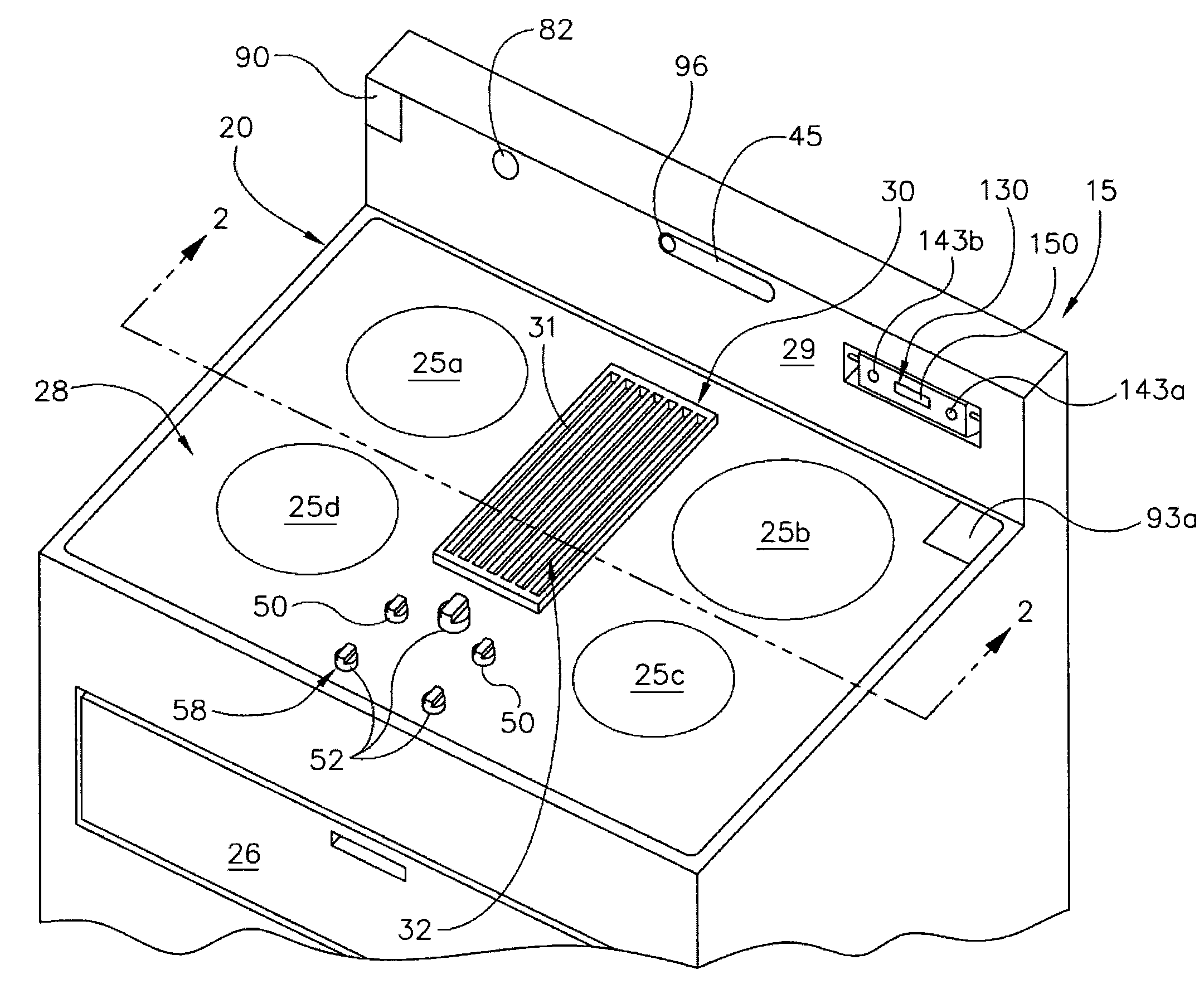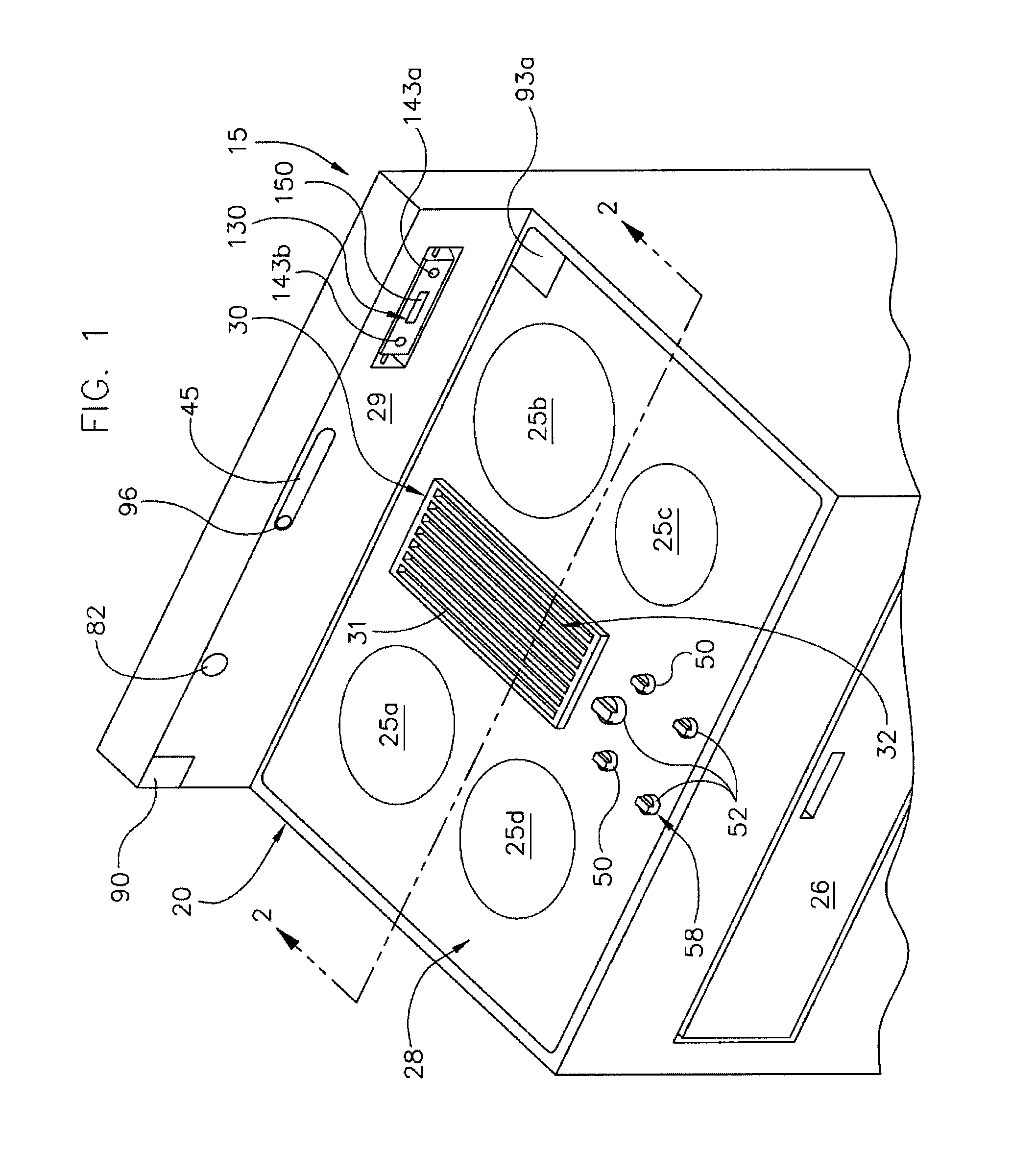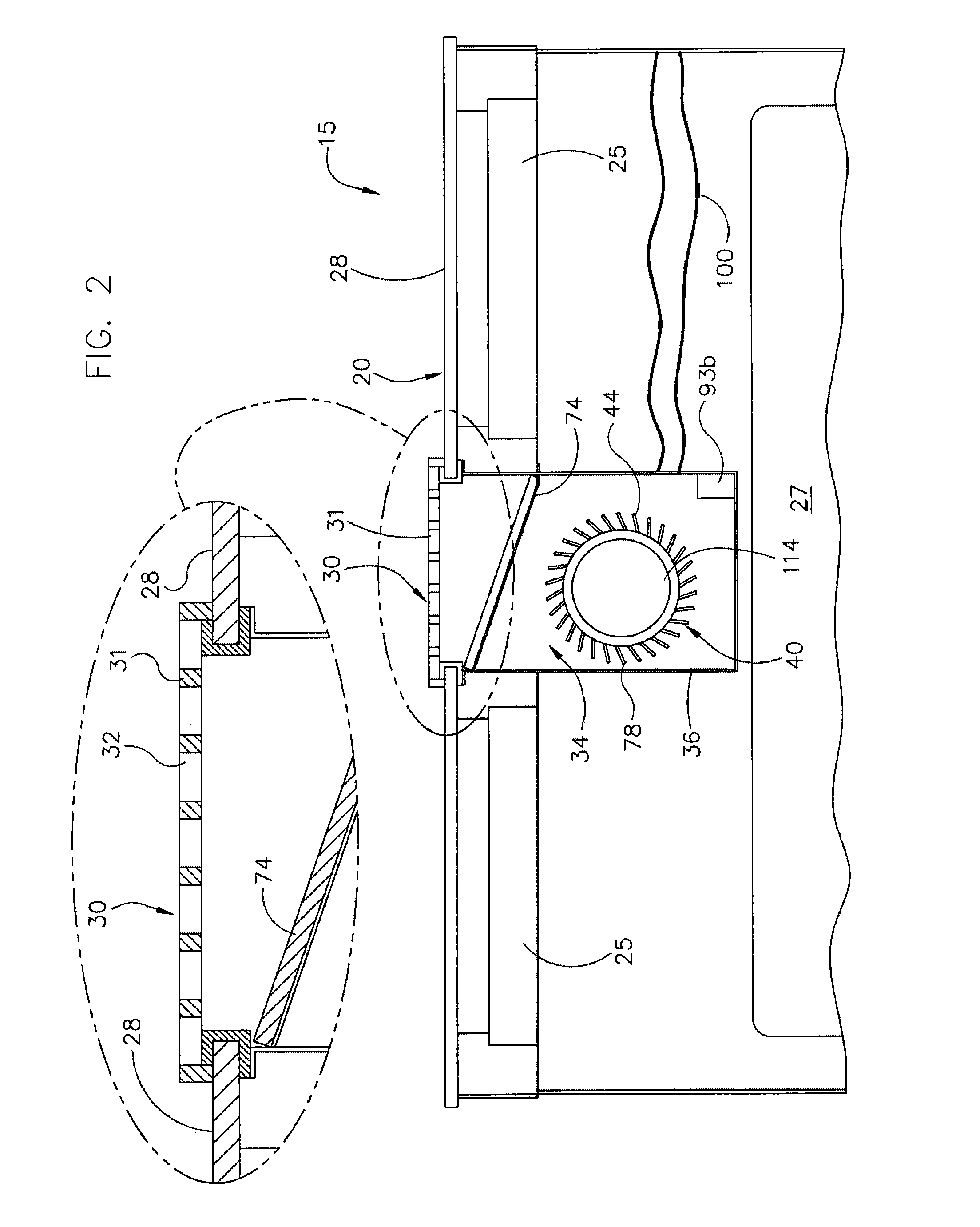Low Profile Induction Cook Top with Heat Management System
a low-profile, heat management technology, applied in the direction of domestic stoves or ranges, heating types, lighting and heating apparatus, etc., can solve the problems of increasing the temperature inside, affecting the efficiency of the system, and the temperature of the incoming air in the existing cooling system, so as to achieve the effect of improving the air flow through the system, reducing the risk of leaking, and reducing the cost of operation
- Summary
- Abstract
- Description
- Claims
- Application Information
AI Technical Summary
Benefits of technology
Problems solved by technology
Method used
Image
Examples
embodiment 410
[0162]Referring now to FIG. 16, in one preferred embodiment 410, the housing lower surface such as bottom or lower surface 432 has at least one opening 429 that accommodates intake vent 422 and a housing side 439 with at least one opening 449 that accommodates vents 430 such that air (AI) is drawn into the housing 424 through the opening 429 via intake vent 422 and expelled through the vent 430 in the side of the housing 439 by a fan 420 effectively forming a ventilation passage cooling the induction heating elements 413 contained in the passage. The induction cook top 410 of FIGS. 15-16 may have vent slots 430 below the counter for venting heat out of the housing 424. The air intake 422 may be located at the front or back of the bottom or lower surface 432 of the housing 424. Optionally, the air intake may be located in one of the sides 439 of the housing 424. Preferably, the air intake 422 is located opposite the venting slots 430. The intake 422 and slots 430 preferably are in co...
embodiment 510
[0167]Referring to a second preferred embodiment 510 of the inventive induction cook top shown in FIGS. 17-21, a cooling device such as an electronic cooling device550 is used to provide cooling to an induction cook top surface 511. The electronic cooling device 550 may be any suitable device, e.g., a forced convection cooler, an electronic heat sink, brazed gain convergence device, a thermoelectric cooling device, a cold plate or plates, electronic heat pipes, a copper spreader, thermal vias or a low profile electronic fan heat sink. Preferably, the electronic cooling device is a thermoelectric cooling device such as a solid-state heat pump 550, which operates by the Peltier effect whereby heat is transferred via the flow of current through a thermoelectric device 550. A first portion 552 (i.e., the “cold side”) of the thermoelectric device 550 absorbs heat in the housing 524, thereby reducing the temperature. A second portion 554 (i.e., the “hot side”) dissipates the heat into the...
PUM
 Login to View More
Login to View More Abstract
Description
Claims
Application Information
 Login to View More
Login to View More - R&D
- Intellectual Property
- Life Sciences
- Materials
- Tech Scout
- Unparalleled Data Quality
- Higher Quality Content
- 60% Fewer Hallucinations
Browse by: Latest US Patents, China's latest patents, Technical Efficacy Thesaurus, Application Domain, Technology Topic, Popular Technical Reports.
© 2025 PatSnap. All rights reserved.Legal|Privacy policy|Modern Slavery Act Transparency Statement|Sitemap|About US| Contact US: help@patsnap.com



